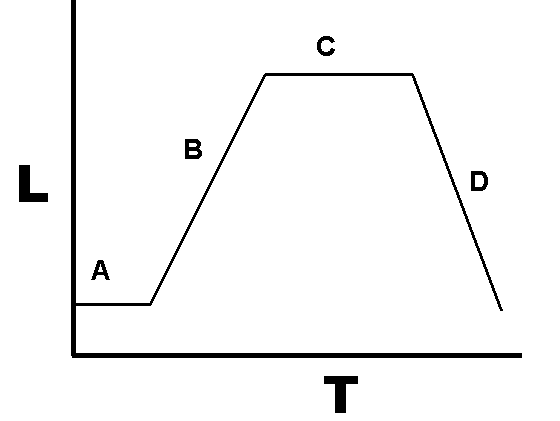Bacterial growth
|
|
In autecological studies, bacterial growth can be modeled with four different phases: lag phase (A), exponential or log phase (B), stationary phase (C), and death phase (D).

Growth is shown as L = log(numbers) where numbers is the number of colony forming units per ml, versus T (time.)
- During lag phase, bacteria adapt themselves to growth conditions. It is the period where the individual bacteria are maturing and not yet able to divide.
- At exponential phase, the individual bacteria are reproducing at their maximum rate; therefore, their number increases during this phase. This phase cannot actually be modeled as a period of exponential growth; the name is a misnomer.
- During stationary phase, the growth rate slows due to depletion of nutrients. This phase is reached as the bacteria begin to exhaust the resources that are available to them.
- At death phase, bacteria run out of nutrients and die.
In reality, these phases are not so well defined, and the curve is much more continuous.
Bacterial growth can be suppressed with bacteriostats, without necessarily killing the bacteria.
In a synecological, a true-to-nature situation, where more than one bacterial species is present, the growth of microbes is more dynamic and continual.
This article includes material from an article (http://www.nupedia.com/article/500/) posted on 26 April 2003 on Nupedia; written by Nagina Parmar; reviewed and approved by the Biology group; editor, Gaytha Langlois; lead reviewer, Gaytha Langlois ; lead copyeditors, Ruth Ifcher. and Jan Hogle.
